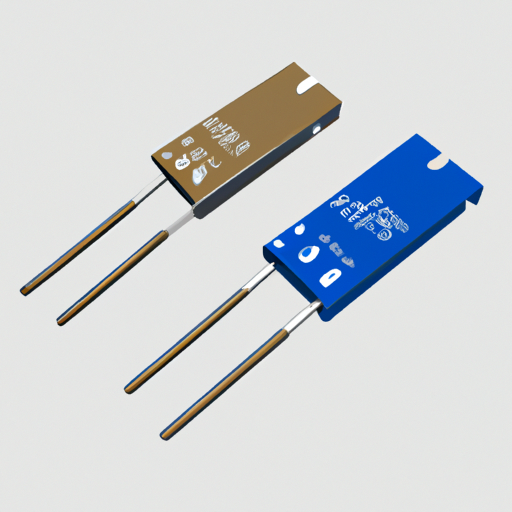The Latest Adjustable Resistor Specifications
I. Introduction
A. Definition of Adjustable Resistors
Adjustable resistors, also known as variable resistors, are electronic components that allow users to change the resistance value within a circuit. This capability makes them essential in various applications, from simple volume controls in audio devices to complex feedback systems in industrial machinery.
B. Importance in Electronic Circuits
In electronic circuits, adjustable resistors play a crucial role in controlling current flow, adjusting signal levels, and calibrating devices. Their versatility enables engineers and designers to fine-tune circuit performance, ensuring optimal functionality across a wide range of applications.
C. Purpose of the Article
This article aims to provide an in-depth look at the latest specifications of adjustable resistors, exploring their types, key specifications, recent technological advancements, and practical applications. By understanding these components better, engineers and hobbyists can make informed decisions when selecting adjustable resistors for their projects.
II. Overview of Adjustable Resistors
A. Types of Adjustable Resistors
1. **Potentiometers**: These are the most common type of adjustable resistors, featuring three terminals. They allow users to adjust the resistance by turning a knob or sliding a lever, making them ideal for applications like volume controls and tone adjustments.
2. **Rheostats**: Rheostats are similar to potentiometers but typically have only two terminals. They are designed to handle higher currents and are often used in applications such as light dimmers and motor speed controls.
3. **Digital Potentiometers**: These modern components use digital signals to adjust resistance. They can be controlled via microcontrollers, making them suitable for applications requiring precise adjustments and automation.
B. Basic Functionality
1. **How Adjustable Resistors Work**: Adjustable resistors function by varying the length of the conductive path within the resistor. By changing the position of a wiper contact along a resistive element, users can increase or decrease resistance, thereby controlling the current flow in a circuit.
2. **Applications in Circuits**: Adjustable resistors are used in various applications, including audio equipment, sensor calibration, and feedback loops in control systems. Their ability to fine-tune resistance makes them invaluable in both consumer and industrial electronics.
III. Key Specifications of Adjustable Resistors
A. Resistance Range
1. **Definition and Importance**: The resistance range refers to the minimum and maximum resistance values that an adjustable resistor can provide. This specification is crucial as it determines the component's suitability for specific applications.
2. **Common Resistance Values**: Adjustable resistors typically come in a variety of resistance ranges, from a few ohms to several megaohms. Common values include 1kΩ, 10kΩ, and 100kΩ, with specialized applications requiring custom ranges.
B. Power Rating
1. **Explanation of Power Rating**: The power rating indicates the maximum amount of power (in watts) that an adjustable resistor can dissipate without overheating. Exceeding this rating can lead to component failure and circuit damage.
2. **Typical Power Ratings for Different Types**: Potentiometers usually have lower power ratings (typically 0.1W to 1W), while rheostats can handle higher power levels (up to 50W or more). Digital potentiometers generally have power ratings similar to standard potentiometers.
C. Tolerance
1. **Definition of Tolerance**: Tolerance refers to the allowable deviation from the specified resistance value. It is expressed as a percentage and indicates how accurately the resistor can maintain its resistance.
2. **Impact on Circuit Performance**: A lower tolerance percentage means higher precision in resistance values, which is critical in applications requiring exact measurements, such as audio equipment and precision instrumentation.
D. Temperature Coefficient
1. **Explanation of Temperature Coefficient**: The temperature coefficient indicates how much the resistance value changes with temperature variations. It is typically expressed in parts per million (ppm) per degree Celsius.
2. **Importance in High-Temperature Applications**: In environments with significant temperature fluctuations, a low temperature coefficient is essential to ensure stable performance. This is particularly important in automotive and aerospace applications.
E. Adjustment Mechanism
1. **Manual vs. Digital Adjustment**: Manual adjustable resistors require physical interaction to change resistance, while digital potentiometers can be adjusted electronically via software or microcontrollers.
2. **Advantages and Disadvantages of Each**: Manual adjustments are straightforward and cost-effective, but they lack precision. Digital potentiometers offer enhanced control and automation but can be more expensive and complex to implement.
IV. Recent Developments in Adjustable Resistor Technology
A. Innovations in Materials
1. **Conductive Materials**: Advances in conductive materials, such as carbon composites and metal films, have improved the performance and durability of adjustable resistors. These materials offer better stability and lower noise levels.
2. **Insulating Materials**: New insulating materials enhance the reliability and thermal performance of adjustable resistors, allowing them to operate effectively in harsh environments.
B. Advances in Digital Potentiometers
1. **Integration with Microcontrollers**: The integration of digital potentiometers with microcontrollers has revolutionized their use in modern electronics. This allows for precise control and automation in applications ranging from audio processing to sensor calibration.
2. **Enhanced Precision and Control**: Recent developments have led to digital potentiometers with higher resolution and lower noise, making them suitable for high-fidelity audio applications and sensitive measurement systems.
C. Miniaturization Trends
1. **Impact on Circuit Design**: The trend towards miniaturization has led to the development of smaller adjustable resistors, enabling more compact circuit designs. This is particularly beneficial in consumer electronics, where space is at a premium.
2. **Applications in Consumer Electronics**: Miniaturized adjustable resistors are increasingly used in smartphones, tablets, and wearable devices, where they contribute to improved functionality without compromising size.
V. Applications of Adjustable Resistors
A. Consumer Electronics
1. **Audio Equipment**: Adjustable resistors are widely used in audio devices for volume control, tone adjustment, and equalization, allowing users to customize their listening experience.
2. **Display Devices**: In display technologies, adjustable resistors help calibrate brightness and contrast levels, ensuring optimal visual performance.
B. Industrial Applications
1. **Automation Systems**: Adjustable resistors are integral to automation systems, where they are used for sensor calibration and feedback control, enhancing system accuracy and reliability.
2. **Robotics**: In robotics, adjustable resistors help fine-tune motor speeds and sensor responses, contributing to improved performance and adaptability in dynamic environments.
C. Automotive Industry
1. **Engine Control Units**: Adjustable resistors are critical in engine control units, where they help regulate fuel injection and ignition timing, optimizing engine performance and efficiency.
2. **Infotainment Systems**: In modern vehicles, adjustable resistors are used in infotainment systems for audio control and user interface adjustments, enhancing the overall driving experience.
VI. Selecting the Right Adjustable Resistor
A. Factors to Consider
1. **Application Requirements**: When selecting an adjustable resistor, it is essential to consider the specific requirements of the application, including resistance range, power rating, and tolerance.
2. **Environmental Conditions**: The operating environment can significantly impact the performance of adjustable resistors. Factors such as temperature, humidity, and exposure to chemicals should be taken into account.
B. Common Mistakes to Avoid
1. **Underestimating Power Ratings**: One common mistake is selecting an adjustable resistor with an insufficient power rating, which can lead to overheating and failure in high-power applications.
2. **Ignoring Tolerance Levels**: Failing to consider tolerance levels can result in inaccurate circuit performance, particularly in precision applications where exact resistance values are critical.
VII. Conclusion
A. Summary of Key Points
Adjustable resistors are vital components in modern electronics, offering versatility and control in a wide range of applications. Understanding their specifications, including resistance range, power rating, tolerance, and adjustment mechanisms, is essential for selecting the right component for any project.
B. Future Trends in Adjustable Resistor Technology
As technology continues to advance, we can expect further innovations in adjustable resistor materials, digital integration, and miniaturization. These trends will enhance performance, precision, and adaptability in various applications.
C. Final Thoughts on Importance in Modern Electronics
In conclusion, adjustable resistors are indispensable in the design and functionality of electronic circuits. Their ability to provide variable resistance makes them crucial for achieving optimal performance in consumer electronics, industrial systems, and automotive applications. As technology evolves, the role of adjustable resistors will only become more significant, driving innovation and enhancing user experiences across the board.
VIII. References
A. Academic Journals
- IEEE Transactions on Industrial Electronics
- Journal of Electronic Materials
B. Industry Publications
- Electronic Design Magazine
- EDN Network
C. Manufacturer Specifications and Datasheets
- Vishay Intertechnology
- Bourns Inc.













